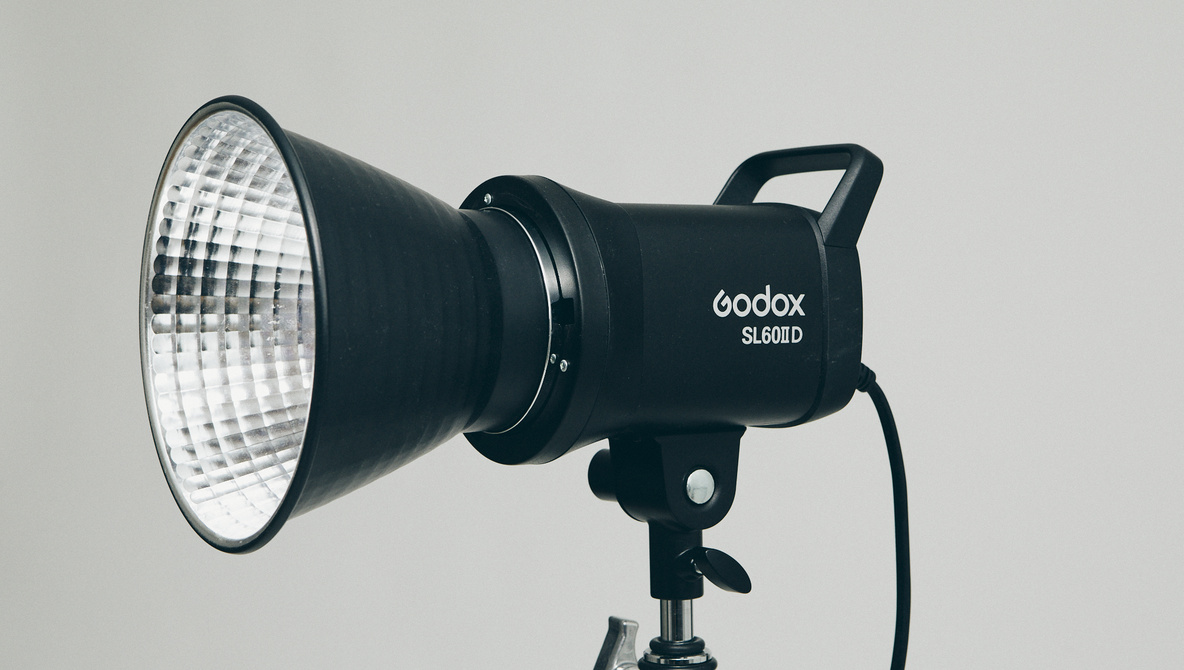
If you’ve followed my work for any time now, you might be familiar with my obsession with lighting. Lights are perhaps some of my favorite things to review. This time around, I decided to give budget lights a try, more notably Godox. It shocked me, somewhat. Read on to find out why.
When I say I was in shock, I mean that my expectations were set significantly lower than this light ended up meeting. Not only was I pleasantly surprised, but I also ended up using the light itself on a lot of my recent shoots, all because constant lights are something I overlooked, only trying out a few options every now and then. That said, I am familiar with the top-of-the-line ARRI lights, Aputure products, and now, Godox products. Is Godox worse than Aperture? Absolutely. But is it so much worse you should not buy it? Absolutely not. In fact, if you are buying your first constant light, this particular model is both affordable and reliable.
Before going further, this is the Mark 2 version of this light. It is much better than the Mark 1, as it is quieter, more reliably constructed, and more feature-packed. I would not see a reason you should buy the SL60 Mark 1 anymore, as it is an old product that does not perform as well as the successor, Mark 2.
Build Quality
The light is made out of a metal casing. It is fairly small and lightweight, coming in at only 3.15 lbs or 1.43 kg. What this offers content creators is a light that won’t require a particularly sturdy light stand. As such, you can put it on one of those cheap light stands and pretty much not worry. It is also a good solution for those times when you need to boom a light. Because it is so lightweight, it can stay on a tiny boom arm without tilting the stand.
A great choice by Godox was to make the light unibody; as such, it does not require a separate power brick outside of the light. You simply plug yours in, and you’re good to go. This reduces size while also making the light more compact. The unit itself is hardly bigger if not smaller than a similarly-powered flash unit, so you might even confuse it for a flash.
The light is built without weather-sealing, meaning it is intended for studio use primarily; however, I don’t see a problem in using it outside should the weather conditions be appropriate. To be frank, for a light at this price point, weather-sealing would be a stretch to expect. Nonetheless, it is something to keep in mind if you are somebody that needs weather sealing in their lights.
There is cooling built into the light, and the fan spins at the same rate regarding the power of the light or the time of usage. While this may sound not that great, there isn’t a real problem there, as the fan is very quiet and is barely audible. On top of that, there are beefy heat sinks surrounding the LED, meaning improved cooling.
There are some things to note about the build quality, though. I am not a fan of the fact that it doesn’t have an umbrella mount, which restricts the number of modifiers you can put on the light. This is strange, as the previous model did feature such a mount, which begs the question: why, Godox, why? Another problem I see with the build of this light is the handle, which doesn’t feature the push-pull mechanism for easier tightening and adjustment. While not a major issue, it would still be welcomed to see a more ergonomic option.
Overall, the build quality is decent for a light at this price, but it does lack some of the pro features, which would ironically make it less of a feature-packed budget-friendly light.
Features
Departing from the previous iteration of this light, the SL-60 Mark II has more buttons and customization options. Moreover, there is a bicolor version, allowing you to change the color temperature of your light.
There are 12 special effects built into the light, which I am not sure I understand the use for. I am, however, sure that there will be somebody in the comments who can explain what they are for and give me a billion and one examples of the times they had to use them. As for my intents and purposes, I see this as an add-on to beef up the spec list.
The Light Itself
I always like to take a more practical approach when it comes to numbers and only do the things that matter. As you can see from the two tests, there isn’t a significant color cast coming from these lights, and they stay more or less consistent throughout the range, which is always welcomed. For those who are interested, this light is rated at CRI 96, meaning solid color rendition. For reference, 95+ is considered to be very good and has now become a standard to reach for most manufacturers. Practically speaking, this light is best used with the reflector it’s shipped with. Placed in a softbox, it can comfortably light a talking head video and be a good key light overall. I would not take it to a large set, instead opting for a more powerful light.

Technically speaking, this light outputs 18,600 lux at 1 m with the reflector on and 2,160 lux with the reflector off.
Phone Connectivity
The thing that I really love about the Godox SL60DII is the phone control option. It has become somewhat expected of lights to have this functionality since one of the pioneering lighting brands debuted their phone connectivity option. I welcome this with open arms. As someone who does not have a remote for the Godox lights and also as someone who loves having their lights far up on a stand, being able to control the majority of the functions from my phone has saved me a lot of time.
Who Is This For?
Just because the Godox SL60D II comes at a budget price, it doesn’t mean that the light itself is bad quality. It rivals and sometimes outperforms its Amaran and Sirui counterparts. Overall, this is a light I would recommend to content creators, people shooting small-scale video productions, or photographers who are looking to explore constant lighting in their work. As for me personally, I tend to bring the Godox SL60DII in whenever I want to achieve color blur or create any other artistic effect that can’t be done with flash. Some of my techniques are explained in my new lighting course.
Some Images Captured Using Godox SL60D II
Oddly enough, I found this light to be a great solution for still photography. Mixed with flash, it can give a very artistic look to the images and create something unique. It’s one of the lights that I am happy to have in my kit, and it’s a pleasure to use in my editorial work.










